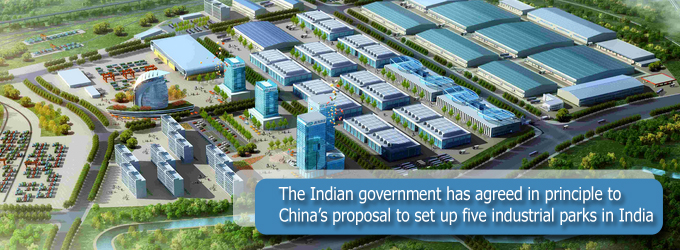|
The possibility of China setting up industrial parks in India is being explored since the last few years, with the obvious objective to attract Chinese investment in Indian infrastructure and also to help narrow the trade deficit between the two nations. Recently, the state of Maharashtra made a strong pitch for the proposed Chinese Industrial Park joining other states trying to woo Chinese investments.

A delegation from Maharashtra Industrial Development Corporation (MIDC) invited top Chinese business houses to invest in the state offering a variety of incentives in different sectors, including the proposed industrial park.
In February 2014, there were talks of setting up a Chinese industrial park at Nasik in Maharashtra. The Park was proposed to come up over an area of 2,000 acre and have 20 to 30 Chinese units, most of them dealing with high-end manufacturing.
Another East Asian country, Japan has already proposed establishing an industrial park in Maharashtra. The Japan External Trade Organization (JETRO) and the MIDC signed an MoU in November 2013 to set up an exclusive industrial park for Japanese companies.
Earlier in 2011, Beiqi Foton, China’s biggest commercial vehicle manufacturer, had signed an agreement with the Maharashtra government for setting up a Rs 1,700 crore manufacturing plant. However, so far the project has not made much progress.
The Indian government has agreed in principle to China’s proposal to set up five industrial parks in India. At the 5th India-China strategic dialogue held in August 2013, the two nations identified five states where the parks could be established, which are - Uttar Pradesh, Andhra Pradesh, Gujarat, Maharashtra and Karnataka. In October 2013, Chinese delegation members were shown potential sites in the five states. Thereafter, the investment proposals have not moved forward at the pace expected.
In Uttar Pradesh, six cities - Kanpur, Allahabad (Naini), Lucknow, Moradabad, Noida and Greater Noida and Khurj - were shortlisted as suitable destinations for setting up the industrial park. The Chinese embassy had also written to the UP State Industrial Development Corporation (UPSIDC) seeking 400 acre of land for the project, with a special focus on manufacturing electronics.
In Gujarat as well, the Chinese Industrial Park is proposed to come up near Dahej and will have around 100 units with total investment ranging close to Rs 10,000 crore. Renewable energy, infrastructure, power, heavy metals and pharmaceuticals are some of the likely sectors where investments will be made. Top business groups from Sichuan Province in China have proposed to invest in the Dahej Park. However, details like number of companies setting up units, what they are going to produce and how much they will invest are yet to be finalized.
Haryana government also put forward its proposal to set up a Chinese Industrial Park in December 2013. The Haryana State Industrial and Infrastructure Development Corporation (HSIIDC) has offered 500 acre of land for the Park and has assured single window clearances to all investment proposals above Rs 100 crore.
Over the last few years, Chinese companies have shown increased interest in establishing manufacturing units in India, especially in agro-processing, tourism and manufacturing. High import tariffs have also made some Chinese equipment manufacturers to consider setting up manufacturing facilities in India.
This is a welcome sign as India faces an unsustainable imbalance in its trade with China. Chinese manufacturing units in India could lessen dependence on imports, thus slightly correcting the trade imbalance. India's main imports from China are machinery and power & telecom equipment while its major exports to the country include iron ore and other natural resources.
India's bilateral trade (exports and imports) with China was only of USD 7 billion in 2004 but has since gradually increased to USD 38 billion in 2008 and to USD 65 billion in 2013. The two countries are exploring several avenues of investment in order to achieve the target of reaching $100 billion bilateral trade by 2015.
|